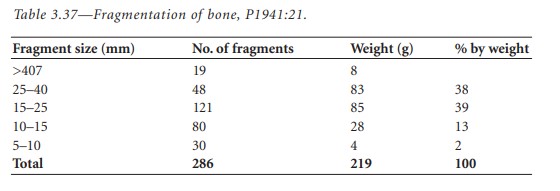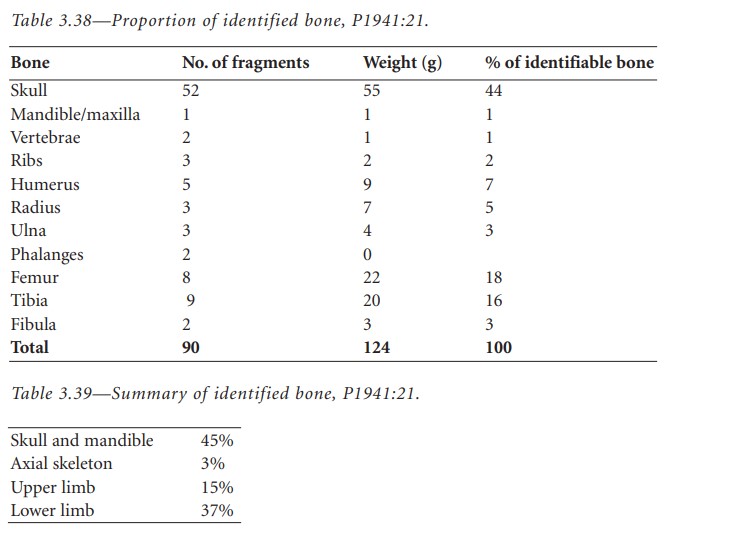County: Kilkenny Site name: COOLRAHEEN NORTH, CO. KILKENNY
Sites and Monuments Record No.: SMR KK011-035 Licence number: E1099
Author: WILLIAM PHELAN AND WILLIAM MONKS
Site type: Early Bronze Age graves
Period/Dating: —
ITM: E 657650m, N 669457m
Latitude, Longitude (decimal degrees): 52.773070, -7.145607
Introduction
In May 1949, Kilkenny County Council workers noticed a stone structure exposed in a riverbank near Castlecomer, Co. Kilkenny. The collapse of an overhanging bank had revealed the end of a cist containing a cremation. The site was visited by Dr William Phelan and the following day by Mr William Monks, both of the Kilkenny Archaeological Society (Pl. 33). Dr Phelan noticed that the area above the cist had been recently dug and subsequently refilled. The grave had been opened and completely emptied, with the result that small fragments of cremated bone were visible in the soil around the cist. The site was almost completely destroyed by the time of Monks’s visit on the following day. The only information surviving is contained in reports that Dr Phelan and Mr Monks sent to the NMI. This report is therefore based solely on these documents.155
Location (Fig. 3.93)
The site was in the townland of Coolraheen North, north-east Co. Kilkenny, close to the border with County Carlow.156 It lay on the south-west bank of the River Dinin between Castlecomer and Coon, about 180m upstream from Salmon Pool Bridge, at an altitude of c. 120–150m above sea level.
Description of site
The burial was found approximately 0.3m below ground level. It was rectangular in plan, withthe long axis aligned north/south. Internally it measured 0.53m wide by 0.61m deep by approximately 1.5m long.157 The cist appears to have been formed of four edge-set slabs, each forming one wall of the cist. These side walls projected slightly in the exposed section and measured, on average, 1.5m long by 0.31m high by 0.11m thick, the eastern side stone being thicker than that at the west. The end stone that would have closed this gap in the exposed section was not present at the time of Phelan’s visit.158 The capstone measured approximately 1.5m long by 0.9m wide by 0.13m thick. It did not rest directly on the side stones but lay on a number of stones laid flat on top of these. The floor was paved with flat slabs measuring approximately 0.3m by 0.3m.
 Fig. 3.93—Location map, Coolraheen North, Co. Kilkenny.[/caption]
Fig. 3.93—Location map, Coolraheen North, Co. Kilkenny.[/caption]The grave had originally contained a cremation of an adult male individual (P1941:21). No associated artefacts were found. It had been dug out and emptied before it could be examined by Dr Phelan and Mr Monks and it is likely that any artefacts present had been removed from the cist. In his memo on the site P.J. Hartnett mentions the discovery of a ‘decorated stone’. This was apparently collected by Monks but was not brought to the Museum. The cist fill consisted of red clay and grit with intermixed stones. Fragments of cremated bone were found around the cist and collected by Dr Phelan. These were analysed by Laureen Buckley and found to represent the remains of at least one adult, probably male.
Comment
The human remains from this site have not been dated. The structure of the site is similar in form and dimensions to many early Bronze Age sites and it is assumed that the cist dates from this period.
HUMAN REMAINS
LAUREEN BUCKLEY
Description of sample
P1941:21 consisted of 286 fragments of cremated bone, weighing a total of 219g. Some fragments were stained with clay but the underlying colour of the bone was white. Most fragments had a chalky texture and some had horizontal fissures on the bone surface. Obviously the sample represents only a fraction of the original cremation so it is not possible to obtain as much information as from a full cremation.

The fragmentation of the sample is shown in Table 3.37, with the largest fragment being 52mm in length. It can be seen that, although there was only a small proportion of very large fragments, the medium- to large-sized fragments, more than 15mm in length, make up 85% of the sample. It is not surprising that the quantity of small fragments is so low, as it would have been easier to pick up the larger fragments from the spoil and it is highly likely that smaller fragments were ignored. Nevertheless, as probably only a small proportion of the original cremation was collected, it is not possible to say whether the entire cremation consisted of large fragments.
Identifiable bone
As there was such a high proportion of large fragments, a significant amount of the sample could be identified. A total of 124g (57% of the total bone) was identified (Tables 3.38 and 3.39).

It can be seen that the proportion of skull is higher than expected, mainly at the expense of the axial skeleton and upper limb. The proportion of lower limb is very close to what would be expected. The proportion of bones found does not reflect what was originally in the cremation but rather the nature of their discovery. Bones from the axial skeleton—vertebrae, ribs and pelvis—would normally be the most delicate in any burial. After the cremation process and the method of disturbance they would have been highly fragmented. They would not be the easiest bones to identify among the disturbed soil around the cist and would be easily overlooked. The skull bones and the large long bones such as the femur and tibia are easily recognised, usually stay in large fragments and would have been easily collected from the spoil. In addition, it is very easy for the osteoarchaeologist to identify skull fragments among cremated remains, while fragmented long bones are difficult to identify individually. Therefore it is understandable that the proportion of skull is so high.
Description of identifiable features of the bones
Skull
Most of the fragments were fragments of calvarium with parietal and occipital bone present.Also present was the mandibular fossa of a temporal bone. The parietal bone averaged 5mm thick and part of the lambdoid and sagittal sutures were visible. The internal occipital protuberance and a well-developed external occipital protuberance were visible on the occipital bone. This usually suggests a male.
Mandible
There was one fragment of mandible present, with a socket for a molar tooth visible.
Vertebrae
Two fragments of articular surfaces from the neural arch, possibly from lumbar vertebrae.
Ribs
Mostly fragments of shaft, but one transverse articular surface was present.
Humerus
This consisted mainly of fragments of shaft, including the proximal part, and there was also one fragment of humerus head.
Radius
Fragments from the shaft were present.
Ulna
Fragments from the distal shaft were present.
Phalanges
One proximal phalanx from the hand and one proximal foot phalanx were present.
Femur
Most of the fragments were from an adult shaft, some with the linea aspera visible and some from near the distal end.
Tibia
All the fragments were shaft fragments, some from the proximal end and some from the distal end.
Fibula
Small fragments of shaft were present.
Minimum number of individuals
There appeared to be a minimum of one adult present and it may have been a male.
Summary and conclusions
This sample represented only a small proportion of the original cremation, as the site had been destroyed before discovery. It seemed to be efficiently cremated bone and mainly the larger pieces were collected from the site, but there was no way of determining whether the cremation had originally consisted mainly of large fragments. Although most parts of the skeleton were represented, they were not in the correct proportion and it was mainly the skull and larger long bones that had been collected. Examination of the identified remains indicated that one individual was represented and that this was an adult, probably a male.
155. Although this is not strictly an NMI investigation, it has not previously been published and the original report rests in the archives of the NMI.
156. Parish of Mothell, barony of Fassadinin. SMR KK011-035——. IGR 257713 169417.
157. The exact internal length could not be established as the cist was revealed in section only. The approximate length given above is estimated on the basis of the length of the capstone, but it is possible that the chamber was somewhat shorter, as the capstone could have extended beyond the chamber.
158. The riverbed was examined for cist stones but none were found in it.